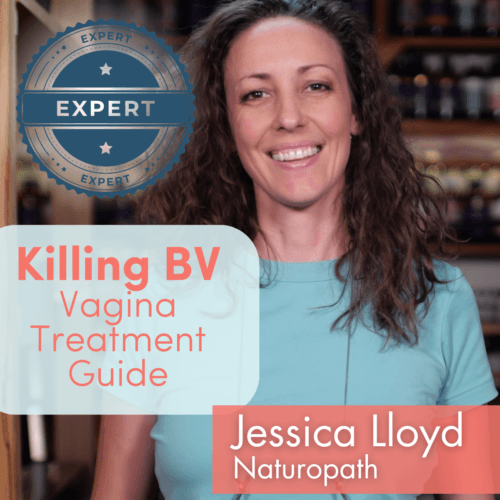MRKH syndrome is a congenital condition whereby the upper portion of the vagina, cervix and/or uterus are absent or very small.
These structures are built by the foetal mullerian duct system in the womb. Chromosomes are 46, XX (female).1–4 This page is about Mayer-Rokitansky-Kuster-Hauser (MRKH) syndrome Type I.
There are three types of MRKH syndrome:
- Typical MRKH – missing or partially formed uterus and vagina (most common form)
- Atypical MRKH – missing or partially formed uterus and vagina, with kidney malformation or uterovaginal aplasia/hypoplasia with ovary dysfunction (about a quarter of cases)
- MURCS syndrome – missing or partially formed uterus and vagina, with kidney (renal) malformations, skeletal malformations, and heart/cardiac malformations (just over 10 per cent of cases)
Symptoms of MRKH syndrome
- Puberty is normal, but menstruating never starts (primary amenorrhoea)5
- Cyclic abdominal pain caused by endometrial tissue shedding without anywhere to go
- Cycle appears normal, including ovulation, since the uterus may exist but be very small
- Infertility (though not everyone with MRKH is infertile, and some can even carry to term and deliver normally)
- Painful intercourse due to a short vagina (dyspareunia due to vaginal aplasia)
- Problems urinating, incontinence, or recurrent urinary tract infections
- Scoliosis and other vertebral anomalies
- Possibly only one kidney
The vagina can end in a blind pouch (vaginal aplasia), so the shallower the vagina, the more challenges the person will have with sex. Surgical and non-surgical techniques can improve the depth of the vagina.
Diagnosis of MRKH syndrome
Genetic testing will be done to check for abnormalities and androgen insensitivity syndrome (AIS). If one has complete AIS, complete external female genitalia exist, but the person is a 46, XY – a genetic male.
Other hormones will be checked for normal levels to examine proper ovarian function (luteinising hormone (LH) and follicle-stimulating hormone (FSH). Testosterone levels are usually in the normal female range.
Imaging may be used to check internal reproductive organs and to check how long the vagina is, any duplicate organs, or obstructions.6,7 The bladder and kidney will also be checked.
Management of MRKH syndrome
The point of any treatment is to provide an unscarred vagina for sexual functioning. Any uterine tissue can be removed to prevent endometriosis and any ovarian impairment. Ovaries provide the body with oestrogen and stop premature menopause.
Vaginal dilators have been used very successfully to stretch out the vagina. New techniques are better than the old, which have been a little bit brutal, and patient compliance was an issue.8
Surgical reconstruction methods
Surgical reconstruction has also been successful.9
Method 1 – skin grafts are taken from the thigh or buttock and used to create a ‘neovagina’ (a new vagina) via a vaginoplasty procedure. Scarring can be an issue, and the process takes many, many months to complete. Dilation will always be required. Neovaginas have their own type of microbiome that requires care.
Method 2 – use a vulval flap to make a vaginal tube. This isn’t ideal since dilation is needed for long periods of time, and the angle may be all wrong. Other flesh can also be used from the labia minora or other fasciocutaneous tissue.
Method 3 – use intestinal tissue (colovagina), since this tissue keeps blood supply. Many people find this surgery to be the most satisfactory.
Method 4 – Vecchietti technique – Continuous progressive pressure is caused by an acrylic olive that is passed through the potential new vaginal space and the abdominal wall. Traction devices are attached and gradually draw the olive upwards over days or weeks, lengthening the vaginal vault. This is now done laparoscopically.
Why does MRKH syndrome occur?
In a nutshell, nobody knows precisely why this happens, and no gene has been identified – there are many variations of Differences (or Disorders) in Sexual Development.
All babies are born girls, and people with MRKH syndrome are genetically female (46, XX), but possibly missing some tissue.
At about five weeks gestation, the Müllerian ducts stop developing, and the Wolffian ducts take over. Since the ovaries use a different set of triggers to grow, they continue to develop unaffected.
The top of the Müllerian ducts, which form the uterus, cervix and upper two-thirds of the vagina, fuse, and the unfused upper ends form the fallopian tubes. The kidneys and renal system then develop out of the Wolffian ducts.
Outcomes of MRKH syndrome
Fertility and pregnancy in MRKH syndrome
Having babies may be possible in several ways. If the uterus and other organs are in place and exist, it may be entirely possible for them to be used. If the uterus doesn’t exist, there is no chance of carrying a baby, but with assistance, since eggs remain perfectly intact, you can get the eggs out and use them elsewhere.
People with MRKH have normal female body development after puberty and average height. A vaginal examination may not be easy or comfortable, though the vulva, labia and clitoris are all normal.
Sex in MRKH syndrome
With reconstructive treatments, a normal, healthy, happy sex life can be achieved.
Psychological outcomes in MRKH syndrome
Counselling is essential since those who discover they have MRKH syndrome must come to terms with the new version of themselves. The new version, of course, looks much like the old version, with a few fundamental differences.10
Feelings range from rage to rejection to everything in between, which may broadly correlate with the degree of infertility or irregularity. Parents may also feel guilt.
Once MRKH syndrome has been discovered and all the relevant tests are done to discover the inside picture, finding other people with the same body will be really important. MRKH syndrome is the second most common reason why periods never begin, which means there are a lot of you out there. Find them. Connect.
One in 4,000-5,000 live births is without a vagina, and it may run in families.11
Kidney issues in MRKH syndrome
The kidneys may be absent or have other malformations – those with a long history of UTIs and other urinary problems may find the cause.12
Skeletal issues in MRKH syndrome
These range in severity and importance, with scoliosis the most common finding.13
What else could it be?
Once you are diagnosed, that is pretty definite, but until then, there could be other congenital genetic abnormalities. These include:
- 5-Alpha-Reductase Deficiency
- Androgen Insensitivity Syndrome
- Congenital Adrenal Hyperplasia
- Disorders of Sexual Development
- Turner Syndrome
References
- 1.Fontana L, Gentilin B, Fedele L, Gervasini C, Miozzo M. Genetics of Mayer–Rokitansky–Küster–Hauser (<scp>MRKH</scp>) syndrome. Clinical Genetics. Published online November 16, 2016:233-246. doi:10.1111/cge.12883
- 2.Herlin MK, Petersen MB, Brännström M. Mayer-Rokitansky-Küster-Hauser (MRKH) syndrome: a comprehensive update. Orphanet J Rare Dis. Published online August 20, 2020. doi:10.1186/s13023-020-01491-9
- 3.Morcel K, Camborieux L, Guerrier D. Mayer-Rokitansky-Küster-Hauser (MRKH) syndrome. Orphanet J Rare Dis. Published online March 14, 2007. doi:10.1186/1750-1172-2-13
- 4.Morcel K, Guerrier D, Watrin T, Pellerin I, Levêque J. Le syndrome de Mayer-Rokitansky-Küster-Hauser (MRKH) : clinique et génétique. Journal de Gynécologie Obstétrique et Biologie de la Reproduction. Published online October 2008:539-546. doi:10.1016/j.jgyn.2008.07.002
- 5.Tsitoura A, Michala L. The Sexuality of Adolescents and Young Women With MRKH Syndrome: A Qualitative Study. The Journal of Sexual Medicine. Published online December 2021:2012-2019. doi:10.1016/j.jsxm.2021.09.006
- 6.Wang Y, He YL, Yuan L, Yu JC, Xue HD, Jin ZY. Typical and atypical pelvic MRI characteristics of Mayer-Rokitansky-Küster-Hauser syndrome: a comprehensive analysis of 201 patients. Eur Radiol. Published online March 5, 2020:4014-4022. doi:10.1007/s00330-020-06681-4
- 7.Boruah DK. Spectrum of MRI Appearance of Mayer-Rokitansky-Kuster-Hauser (MRKH) Syndrome in Primary Amenorrhea Patients. JCDR. Published online 2017. doi:10.7860/jcdr/2017/29016.10317
- 8.Ketheeswaran A, Morrisey J, Abbott J, Bennett M, Dudley J, Deans R. Intensive vaginal dilation using adjuvant treatments in women with Mayer‐Rokitansky‐Kuster‐Hauser syndrome: retrospective cohort study. Aust NZ J Obst Gynaeco. Published online September 28, 2017:108-113. doi:10.1111/ajo.12715
- 9.Jain N, Kamra JH. A Review of Literature on Mrkh Syndrome. New Frontiers in Medicine and Medical Research Vol 1. Published online August 2, 2021:119-129. doi:10.9734/bpi/nfmmr/v1/2980f
- 10.Tsarna E, Eleftheriades A, Eleftheriades M, Kalampokas E, Liakopoulou MK, Christopoulos P. The impact of Mayer–Rokitansky–Küster–Hauser Syndrome on Psychology, Quality of Life, and Sexual Life of Patients: A Systematic Review. Children. Published online April 1, 2022:484. doi:10.3390/children9040484
- 11.Cospain A, Dion L, Bidet M, et al. Optimizing care for <scp>MRKH</scp> patients: From malformation screening to uterus transplantation eligibility. Acta Obstet Gynecol Scand. Published online October 9, 2024. doi:10.1111/aogs.14985
- 12.Fontana L, Gentilin B, Fedele L, Gervasini C, Miozzo M. Genetics of Mayer–Rokitansky–Küster–Hauser (<scp>MRKH</scp>) syndrome. Clinical Genetics. Published online November 16, 2016:233-246. doi:10.1111/cge.12883
- 13.Kapczuk K, Iwaniec K, Friebe Z, Kędzia W. Congenital malformations and other comorbidities in 125 women with Mayer-Rokitansky-Küster-Hauser syndrome. European Journal of Obstetrics & Gynecology and Reproductive Biology. Published online December 2016:45-49. doi:10.1016/j.ejogrb.2016.10.014
The most comprehensive vaginal microbiome test you can take at home, brought to you by world-leading vaginal microbiome scientists at Juno Bio.
Unique, comprehensive BV, AV and 'mystery bad vag' treatment guide, one-of-a-kind system, with effective, innovative treatments.
Promote and support a protective vaginal microbiome with tailored probiotic species.





